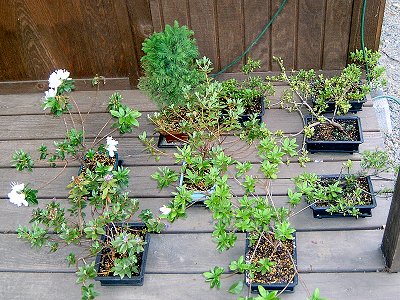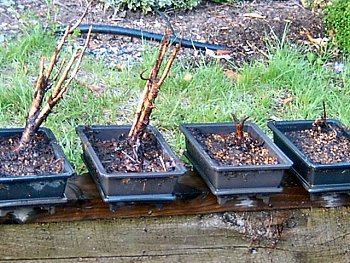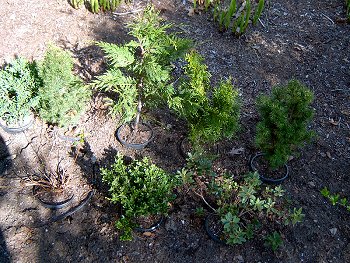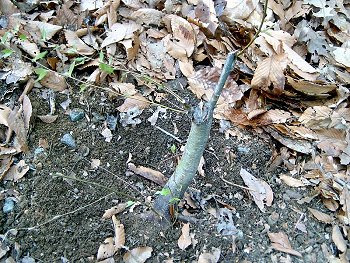Getting Started with Bonsai
I admit I have good old Mr. Miyagi of The Karate Kid to thank for my first exposure to caring
for bonsai . Not exactly expert training that, but it did put the thought in
my mind that bonsai keeping might be something I'd be interested in. Many years later, while attending
the annual state fair, we were always impressed with the bonsai displays there in the flower pavilion.
The displays were put up by the NorthEast Bonsai Association
![]() (NEBA), our local
chapter of the American Bonsai Society. A couple years ago we mustered the courage to take the plunge and signed up to attend
one of their introductory meetings. At that first meeting, they supplied us each with a small Juniper,
showed us how to re-pot it, wire it into shape, and do a little light pruning. Two weeks later the tree was dead, of course.
Hmm... this wasn't as easy as it looked.
(NEBA), our local
chapter of the American Bonsai Society. A couple years ago we mustered the courage to take the plunge and signed up to attend
one of their introductory meetings. At that first meeting, they supplied us each with a small Juniper,
showed us how to re-pot it, wire it into shape, and do a little light pruning. Two weeks later the tree was dead, of course.
Hmm... this wasn't as easy as it looked.
We paid our membership fees and became "official" members for a year, although our available time and multiple projects only allowed us to attend a handful of meetings before we let our memberships lapse. Still, the brief time in NEBA provided enough exposure to the hobby to make us realize we wanted to stick with it. I picked up a few more shrubs from the nursery and tried my hand at re-potting them again... I think that batch of 4 trees lasted a whole month before turning crispy and brown. Well this just was not acceptable. I consider myself a fairly accomplished gardener with a good understanding of how to care for plants. My foray into the bonsai hobby was quickly turning into a hobby of buying little $5 shrubs and torturing them to death. I needed to figure out what was going wrong, so as I do with most subjects I'm interested in, I started doing some serious self-education on the 'net and by purchasing and reading a lot of bonsai books. Judging by the sheer volume of information available in print on the subject, I wasn't the only one that wasn't "getting it" on my first pass.
Bonsai Status
Learning from Mistakes: Winter 2006/2007
Winter of 2006 / 2007 turned out to be my bonsai education season, so by Spring of 2007 I was feeling well prepared
to give it another try. I learned two very important things about bonsai care through all my extensive research:
I also figured out that there was a huge industry dedicated to the seemingly simple art of bonsai , so I slowly began building a proper set of bonsai tools, which are really nifty toys (perhaps this whole interest in bonsai has really just been an excuse to buy more tools? I'll never tell).
Feeling confident with my new tools and knowledge, we picked up a wide variety of nursery stock that would serve as our new batch of torture victims... erm, bonsai trees. With that batch, we decided to observe the above rules, and did nothing drastic to the plants that first season. Rather than immediately re-pot them, bind and twist them with wire, then de-foliate them with severe pruning, the new approach was to go very slowly and let the plants adjust to each step of the transformation from landscape shrub to miniature tree. They stayed in their nursery pots which allowed a little wiggle room for us to get used to performing the daily watering check. The only pruning we did was to perform a couple of selective heading cuts to each plant to encourage more branch growth for the future (the being patient part). That approach seems to be working so far. By the end of the summer all the plants were still alive (no small matter), so we relocated the pots from their sunny home next to the garden shed to their over-winter home - buried under heaps of leaves in the compost bin.
Spring 2008 Status:
In early Spring of 2008, we pulled all the plants from their dark wintery home, and found them to still be alive, much to our surprise.
Since the plants had received their topping cuts the first year, it was time to re-pot and do some root pruning while they were still
waking up from their long Winter's nap. Rather than trying to stuff the plants into some tiny little ceramic display pot (which was the
case with out previous attempts, all resulting in death), I had purchased a number of large plastic "training pots" which could hold a fair
amount of soil and allow the plants to keep most of their root system. I'd also learned the importance of proper soil composition with
regard to giving these things a fighting chance, so we used Fujiyama Potting Medium this time around, rather than run-of-the-mill household
potting mix.
The plants had made it through another growing season in their new training pots (we did lose 2, which ended up in ceramic pots because I didn't have enough training pots), and we didn't do any additional work on them apart from diligent watering and a careful application of Bio-Gold bonsai fertilizer in June, July and August. They're all back in the Winter home for now, and Spring 2009 will be the first season of beginning shaping and pruning... this will be interesting. In addition to the nursery stock that we're currently experimenting with, I also transplanted a number of Azaleas that just weren't doing much from the landscape into bonsai training pots. They made it through last season in the pots, and while not doing great, I'm hoping they'll recover now that their getting a little more attention.
Spring 2009 Status:
In late April, we had a very early week of unseasonably warm weather which quickly put us behind schedule in our Spring gardening chores.
Time was spent getting the pond ready and doing leaf clean-up, and when I finally had a chance to rummage in the compost bin for the
bonsai , my heart sank at what I found. All but one of our trees were dead. I was sure I was going to find a bunch of
damp little pots with bud covered trees in them as I had the year before, but instead I recovered trees that were completely stripped of bark
and chewed to little wooden nubs in their pots. On closer examination, I think the devastation was a result of two problems. First, I
buried the plants too deeply in the leaves the previous Fall, so rather than providing frost protection the leaves actually composted
over the Winter (or perhaps it was during the Fall and warm Spring) and cooked poor little plants as the leaves decomposed. Second,
I had placed the plants under large sections of expanded metal so the weight of the leaves wouldn't break their branches. Apparently
some rodents found the little "compost cave" I created to be a wonderful spot to spend the Winter, and munched all the bark and greenery
off the trees over the Winter (many of the trees had evidence of chewing on their trunks). Another hard lesson learned, but we're not
giving up.
Spring 2010 Status:
After a good deal of study over the Winter this year, I realized I've been rushing this whole bonsai
process quite a bit, even though it's felt like I was doing pretty much nothing other than watering the trees. The trouble
it seems, has been all this root pruning and stuffing into little pots. I've changed my approach a good deal, and while I
still potted and wired a couple trees into training pots this year, I think I'm going to stick to the "growing bed" concept
for most of these trees and just let them grow for a while and gain strength. While left in a growing bed, the trees should
develop good, thick trunks and plenty of branches. I may do a bit of wiring later this year or early next year, but I don't
plan to mess with the roots for a few years at least.
The details of this year's activities include removing the Common Boxwood from the nursery pot, and placing it in a large training pot. The two white Azaleas were also moved from their over-winter nursery pots into bonsai training pots The other nursery stock plants from last year were removed from their pots and placed in the same locations in the growing bed (they spent the Winter buried in the growing bed in their original pots). A couple of old potted trees from 2008 managed to make it through another Winter (one Alberta Spruce, and a pair of Rhododendrons), so those pots were also unearthed from the growing bed and the trees were given a minimal amount of wiring - hard to say yet if those are going to survive. I also moved a number of trees I'd been monitoring for a couple seasons from the local woods to the growing bed area. Our losses were minimal this year, consisting of a handful of pruned bits from the Plum tree I'd tried to get to root. We also lost a Bloodgood Japanese Maple, which was purchased last year at Home Depot and appeared to be doing well. That one was left sitting in its large pot in the corner of the compost bin, so although it was sheltered from wind, the temperatures must have gotten to the roots and killed it.
Spring 2020 Status:
Unfortunately, our bonsai endevors have been largely abandoned due to other garden projects (mostly
dealing with the bamboo), and the priorities of the overall home renovation work. The plants in the "growing bed"
are still there and they get an occasional pruning to keep them relatively small, but there's just no free time to dedicate to potted
bonsai care while so much still needs to be done to the house. I'm still interested in pursuing this as
a hobby some day, but it likely won't happen until after the garage is built — which will allow a lot of space in the
shed to be freed-up by relocating all those tools to the garage, and give me a place to properly care for plants.
Plants for Bonsai
The majority of our current set of potential bonsai started as 1-gallon size nursery stock. These plants are inexpensive (about $5 each) and I don't agonize over an occasional loss. We did pick up a 5-gallon "Bloodgood" Maple last year (2008) as well to fill in a spot near the pond where I've tried to unsuccessfully grow a Lotus for the past 3 years... it died over the Winter of 2008/2009. We tried another 5-gallon "Bloodgood" Maple in Late Spring 2009, and that one also didn't make it through the Winter. Third time's a charm, so we'll try again in 2010. As stated earlier, I've also pulled a number of under-performing Azaleas from the landscape to see if they fare any better as bonsai . We've also tried a encourage a few cuttings to root using both air-layering and bare rooting propagation methods with some success.
Bonsai from the Wild
In addition to nursery stock, we also did a fair amount of scouting the local woods for likely bonsai
candidates during Spring 2008. We found a number of potential specimens that will be transplanted to a holding area Spring of
2009, depending upon how they've managed over the Winter. Collecting natural trees for bonsai is a
real test of patience, since the change from their natural growing conditions to the extremely unnatural conditions of a
bonsai pot is severe. The first step I took was to look for interesting shapes in the trunk
right at the ground, then try to determine if it would be possible to transplant the tree without destroying it (many of the
most attractive trees I found were well entwined with the roots of the parent tree, so there would be no way to extract the
potential bonsai without seriously damaging both plants).
Once I'd found a likely candidate (usually with a 1-1/2" caliper or less), I'd tag the tree with a loose ribbon so I could find it again, then take a deep breath and cut the trunk off at an angle about 6 or 8 inches above the ground. Scary, but within a month the cut had started to heal, and dormant buds below the cut threw out a profusion of new branches and leaves. By the Fall 2008 the potential bonsai appeared to be doing well, so I used a garden spade to make an angle cut into the roots a few inches below the surface from one side of the plant. This Spring I'll check to ensure new root growth on the cut side, then likely cut the other side and transplant the whole thing to a small section of the yard we've reserved as a mini bonsai nursery. If all goes as planned, these trees from the wild should make it into training pots Fall of 2009 or Spring of 2010. Patience.
Spring 2009 Plant List Update:
With the results of the disastrous Winter behind us, I've purchased a new set of nursery stock to use for another attempt at this
bonsai growing business. I may not "agonize over an occasional loss", but having everything die over the Winter
is pretty disturbing. We'll try again, with the fresh set of plants.
Spring 2010 Plant List Update:
The results of last Winter were substantially better than previous years, and this year I collected most of the wild trees
and moved them to the growing bed as well. The Red Maple was lost due to a very wet spring - the poor thing spent many
weeks under water, although I did find a couple more promising Maple saplings and should be able to re-locate those in a
year or two. I also moved an Apple tree that I had previously taken the top from with an air pot, and pruned the remaining
stump down to an appropriate size a couple years ago. The list below has been updated to reflect this year's changes:
| Nursery Stock Bonsai | Bonsai from the Wild |
| |
Common Apple Malus domestica |
| |
Black Birch Betula lenta |
| |
|
| |
|
| |
Red Maple Acer rubrum |
| Bloodgood Japanese Maple Acer palmatum atropurpureum | |
| |
Landscape Transplants |
| |
|
| |
Purple Gem Rhododendron Rhododendron 'Purple Gem' |
| Bonsai from Propagation | |
| |
|
| Dwarf Burbank Plum Prunus salicina 'Burbank' | |
| hover over the "¤" symbol to view a small image of the pre-Bonsai plant | |
Bonsai Tools & Supplies
So far my favorite part of the bonsai hobby has been collecting all the toys I supposedly need to be successful... of course a typical garden trowel and a pair of pruning shears would probably do the trick, but where's the fun in that? Getting a chance to use some of the specific bonsai tools at the NEBA meetings also made it clear that standard pruning shears were far too cumbersome for the tiny nibbles one takes while pruning a bonsai . I don't think I went too crazy with this stuff (although lovely bride may offer a different opinion on the subject) and exercised great restraint by only purchasing the "beginner" or "student" level tools, as opposed to the stainless steel "master" level goodies that cost obscene amounts of money.
I started with the basics of simple black metal tools and put together a set consisting of a concave cutter, spherical knob cutter, root cutter, root hook, root rake, medium shears and wire cutters. I've gradually added to the initial set with a few more specialized shears and bud snips, tweezers, jin pliers, gravers, a trunk splitter, a small saw, a small soil tamper and trowel, and a little whisk broom. For all that stuff I picked up a Bucket-Boss tool roll (I wanted something a bit more substantial than the canvas rolls sold by bonsai stores) for the tools, and a nice rubber-bottomed garden tote for other supplies and larger tools.
In addition to tools, other supplies include a fair collection of plastic training pots and drainage trays, drainage mesh, a selection of sizes of wire, soil sieves and scoops, a medium duty turn table, and a couple large shallow plastic trays that we use to contain the re-potting mess and for submersion watering after re-potting. I've rounded out the supplies with a tube of Callousmate cut paste, Bio-Gold fertilizer, Superthrive tree vitamins, jin sulphur, rooting hormone, and some Camellia oil to keep the tools happy.
The sources for the tools and supplies I've collected consist mostly of E-Bay, as well as the excellent prices and selection
available from Stone Lantern ![]()
Now if I can just stop killing trees I might actually get a chance to use some of that stuff I've been buying for the last few years!
Bonsai Reference Materials
Here's our collection of books on bonsai care and styling:
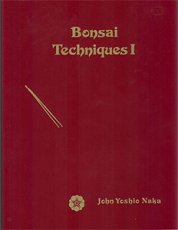
by John Yoshio Naka
Publisher: Dennis-Landman Publishers
Pub. Date: June, 1984
ISBN-13: 978-0930422318
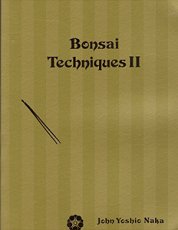
Bonsai Techniques II
by John Yoshio Naka
Publisher: Dennis-Landman Publishers
Pub. Date: December, 1998
ISBN-13: 978-0930422332
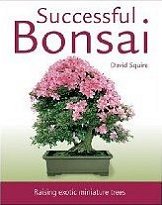
by David Squire
Publisher: Firefly Books
Pub. Date: January, 2008
ISBN-13: 978-1554071579
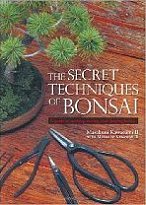
The Secret Techniques of Bonsai: A Guide to Starting, Raising, and Shaping Bonsai
by Masakuni Kawasumi II and Masakuni Kawasumi III
Publisher: Kodansha International
Pub. Date: February, 2006
ISBN-13: 978-4770029430

by David Joyce
Publisher: Sterling
Pub. Date: February, 2006
ISBN-13: 978-1402735240
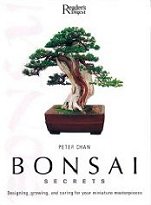
Bonsai Secrets
by Peter Chan
Publisher: Readers Digest
Pub. Date: March, 2006
ISBN-13: 978-0762106240
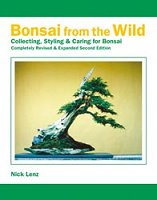
by Nick Lenz
Publisher: Stone Lantern Publishing
Pub. Date: 2006
ISBN-13: 978-0976755025
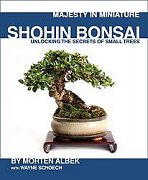
Shohin Bonsai: Unlocking the Secrets of Small Trees
by Morten Albek, Wayne Schoech
Publisher: Stone Lantern Publishing
Pub. Date: April, 2008
ISBN-13: 978-0976755067
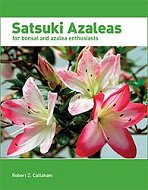
by Robert Z. Callaham
Publisher: Stone Lantern Publishing
Pub. Date: 2006
ISBN-13: 978-0976755017
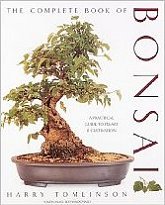
The Complete Book of Bonsai
by Harry Tomlinson
Publisher: Abbeville Press
Pub. Date: March, 1991
ISBN-13: 978-1558591189

by Larry Student, Shirley Student
Publisher: Tuttle Publishing
Pub. Date: April, 1993
ISBN-13: 978-0804817295

Growing Bonsai: A Practical Encyclopedia
by Ken Norman
Publisher: Lorenz Books
Pub. Date: June, 2006
ISBN-13: 978-0754815723
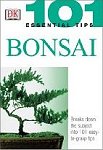
by Harry Tomlinson
Publisher: DK Adult
Pub. Date: September, 2003
ISBN-13: 978-0789496874
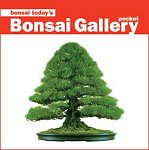
Bonsai Today's Pocket Bonsai Gallery
by Wayne Schoech (Editor)
Publisher: Stone Lantern Publishing
Pub. Date: July, 2008
ISBN-13: 978-0976755050
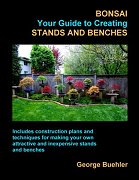
by George Buehler
Publisher: Haskill Creek Publishing
Pub. Date: September, 2009
ISBN-13: 978-1605309934
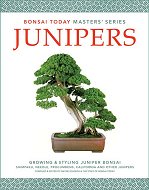
Bonsai Today Masters' Series Junipers
by Wayne Schoech (Editor)
Publisher: Stone Lantern Publishing
Pub. Date: March, 2007
ISBN-13: 978-0976755036

Bonsai Today Masters' Series
by Masahiko Kimura
Publisher: Stone Lantern Publishing
Pub. Date: March, 2008
ISBN-13: 978-0976755043
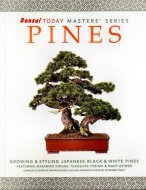
Bonsai Today Masters' Series Pines
by Wayne Schoech (Editor)
Publisher: Stone Lantern Publishing
Pub. Date: March, 2007
ISBN-13: 978-0976755009
↑


